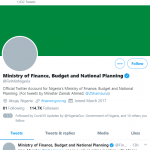
Andrew Skipper, Head of Africa at international law firm Hogan Lovells, and a Partner, Thomas Kendra, write on the economic potential of the African Continental Free Trade Area (AfCFTA) agreement.
ember States of the African Union (AU) have a combined population of over 1.2 billion people and gross domestic product of more than US$ 3.4 trillion.
Yet, the continent accounts for less than three per cent of world trade. Within this, intra-African trade accounts for only 15 per cent of the continent’s total trade.
The African Continental Free Trade Area (AfCFTA) is an ambitious project to unite this group of countries, individuals and economies under a single market with freedom of movement of goods, services, capital and people.
The AfCFTA is expected to contribute significantly to trade liberalisation across Africa and thus foster and further develop the economic relations among African states, which will benefit from integrated value chains, cheaper raw materials and economies of scale.
Read Also: How AfCFTA will impact economy, by NESG
The AfCFTA agreement is the first free trade agreement (FTA) or international investment agreement covering the whole of the African continent.
The impact of a single unified framework for trade and investment will be significant in a region with multiple existing regimes which divide African regions into blocs, and allow for highly differential terms of trade and investment on a bilateral basis between countries.
The AfCFTA Agreement seeks to harmonise trade across Africa against a backdrop of several existing regional FTAs, each providing for different rules and standards within segmented groups of African nations.
The existing picture is further complicated by a huge number of Bilateral Investment Treaties (BITs) between states, both intra-African and with third party states.
Regional agreements have so far spurned treaties with third party blocs, for example between the Southern African Development Community and European Union.
In parallel, investment protection in Africa occurs through a multi-layered and varied patchwork of legal provisions across the continent – made up of the investment provisions of treaties supplemented by national laws. Beyond this, the Pan-African Investment Code (PAIC) is a non-mandatory code, still in draft form, that has been developed in recent years and aims at setting out guidelines for intra-African investment rules.
While economic integration via bilateral and regional agreements is in many ways a sign of progress, observers have raised concerns regarding the fragmentation of the continent’s trading system into exclusive blocs, especially in the context of relatively low intra-regional trade.
For this reason, the AfCFTA agreement is the next logical step in the continent’s journey to economic integration. Once fully implemented, the AfCFTA will constitute a single market covering both trade and investment, liberalising both of these aspects across Africa.
The AfCFTA agreement aims to align policy, reduce costs, promote integration and realize sustainable and inclusive development across Africa.
In essence, the AfCFTA is a modern agreement that will provide significant levels of legal certainty to traders, while improving transparency and allowing for a more predictable trading environment in Africa.
At this stage, the investment protection implications of the AfCFTA are unknown – but we can draw a few conclusions regarding the likely approach of negotiators.
Following in the footsteps of recent Bilateral Investment Treaties (BITs) and regional agreements, and in light of a prevailing trend towards balancing investor and state obligations, we can expect to see a compromise between encouraging investment by creating a stable legal and economic environment, while also reflecting Member States’ concerns regarding the impact of traditional investment protections.
This could be reflected in carve-outs to substantive investment protections, obligations on investors, or overt recognition of states’ rights to regulate. It is also not yet clear whether we will see Investor State Dispute Settlement in its traditional form of international arbitration, or another institutional setup – perhaps leaning towards African dispute resolution institutions.
Overall, there is still plenty of work to be done. Some have cautioned that the goal is a long term one, which will require patience and a sustained commitment to removing both tariff barriers as well as “invisible” non-tariff barriers.
But ultimately, this ambitious program has the potential to create one of the largest free trade areas in the world.
Achieving this goal will undoubtedly require a significant investment from African Union member-states – but if successful, the impact on Africa and the rest of the world will be huge.
You may be interested

2024 CHANQ: History Not Kind To Us Against Ghana –Ogunmodede
Webby - December 24, 2024Home-based Super Eagles coach Daniel Ogunmodede says history has not been good to Nigeria when they face rivals Ghana.The home-based…

Ex-Chelsea Star Oscar Returns To Boyhood Club Sao Paulo
Webby - December 24, 2024Former Chelsea midfielder Oscar is returning to his Brazilian boyhood club Sao Paulo after 14 years, which included a long…

‘I’m Incredibly Proud’– Arokodare Talks Up Genk’s Unbeaten Home Streak
Webby - December 23, 2024Tolu Arokodare is full of excitement followingGenk’s historic victory over Anderlecht, reports Completesports.com.Sunday’s win at the Cegeka Arena was the…


















![American Pastor, David Wilson Seen Eating The Box Of Woman Who Isn’t His Wife [Video]](https://onlinenigeria.com/wp-content/uploads/2019/10/american-pastor-david-wilson-seen-eating-the-box-of-woman-who-isnt-his-wife-video-150x150.jpg)










Leave a Comment